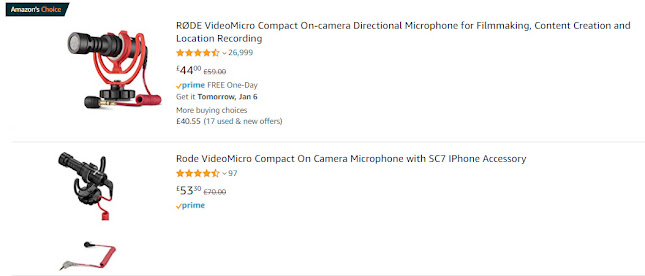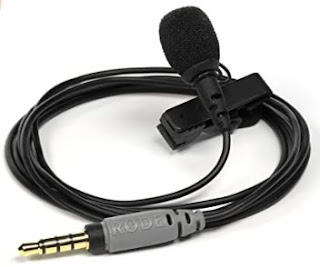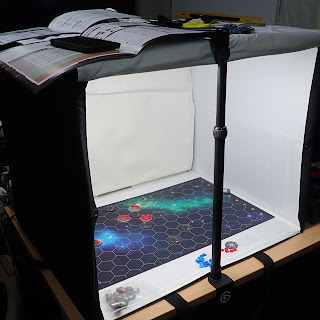Sound - the forgotten part of video
Sound is one of the most important parts of a video, yet many people just use the mic on the phone or camera and wonder why its not good enough. With quite a modest outlay you can buy a reasonable microphone that will be 100% better than the phone or camera. We are going to look at some small scale setups here and more complex systems later on.
Replace the camera/Phone Mic
This is the Rode VideoMic and at £40-£50 it will improve the phones sound by an impressive amount and it can affix to a phone/camera just by the connector.
These mics are directional, so aim them and they will just pick up what you are pointing at and very little other sound, unlike the standard mic in the phone which is designed to capture sound in all directions. Often the phone scores better here than a small camera, as the cheaper cameras don't have connectors for microphones.
In the photograph below my Rode Mic has a special shock mount to absorb a lot of noise when moving around. Buying the microphone with the right connector is important. Rode here make several versions of the same thing with different connectors USB C, Apple, standard microphone ear piece socket etc. There are bigger and better versions but the cost rises and sometimes so does the complexity.

Move the Mic from the Camera
Although this looks like a good idea to put the microphone on the camera, the camera is not often where you want to place the mic. So sometimes it is better to have two systems, one to take the video and the other to record the sound and later the two can be merged together, but this can be a lot of work, so another way is to use a clip on mic ( a lavaliere) and either a long wire or a wireless system to connect it to the camera/phone. An example of this is the Rode smartlav plus at about £50 its not cheap but it is good.
Using the smartlav plus the microphone is pinned to the subject and gives excellent sound since it is near the subject and if you don't want to see the mic the mic and wire can be hidden under the clothes as long as they are not too thick. This is the system the newscasters use. If you look at the newscasters they often have this mic pointed away from them. This can be a good idea in a quiet place, but in a noisier environment then have the mic facing the person you are recording.
Why am I using Rode mics? These are the ones I use, they are good value for money - good quality and not too expensive. There are many very good other makes out there but many are beyond my price point. My son went out to Australia and used a Rode mic out there, found it was good so we have used them ever since. Rode don't pay me for using them or even lend them to me to review. They are just the mics we use. Sound is something that people can get heated up about. but remember it is like when I give you a piece of paper with typing on it, can you tell which word processor I used? The same is often very true with sound, it is only the finished article that matters nobody really cares what sound system you used as long as they can hear clearly what is going on...
What the pros use
If you watch the news you will have seen the newscasters with one of these. It is a directional boom mic in a fluffy coating to keep the wind noise at a minimum. There is a very good reason why broadcasting companies use microphones like this. Generally these microphones give the best quality of sound, but this is usually at a price. This type of system often needs someone else to operate it (point at the person talking) and keep the mic out of the camera shot. For any film but the most basic home system normally there is someone just listening to the sound, as there is someone videoing.
Once you decide to go a bit deeper into video and film making then one possibility is the Rode Wireless Go or the Go II and these open a new world of possibilities and are great.
The Wireless Go is a very small box that can also have a lav mic attached to it. There is a transmitter and a receiver. The transmitter has a built in microphone. The receiver has a built in recorder. The Wireless Go ii has two transmitters for recoding interviews and the like. And it of course can just plug into the phone to give better sound. The general rule of film making is get the microphone or microphones are close to the subject as you can and wireless systems of any make are the best way of doing this. Soince these devices can be plugged directly into the phone or camera then issues with syncing the sound and the video do not arise, which makes a home video quicker and easier to make.
Other microphones that are really good are the Sennheiser microphones to name but one. For more professional setups the microphones are smaller and better quality but then the price is much higher. Many of these microphones are designed for specific jobs like recording a guitar or drums and work well at certain audio ranges.
At £700 or so these mics are significantly more expensive but are smaller, easier to conceal and have a better range. Some people say they can tell the difference.
There are also some much cheaper systems but my experience with these has not been good, and it is often true you get what you pay for. Buying a Mid range to high end system can make a significant difference.
As you get more involved then you might want more expensive and powerful microphones, recorders and other accessories. We will have a look at some of these different system for you but that is the topic of another Podcast, Video and Blog.










Comments
Post a Comment